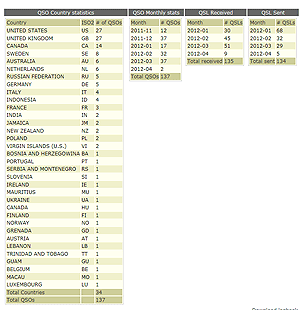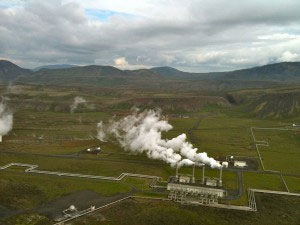| Forum List | Message List | Search |
|
HamSphere Newsletter April 2012
2012-04-12 18:40 |
Admin Registered: 16 years ago Posts: 1,061 |
|
Dear HamSphere Operators
Welcome to the April 2012 Edition of the HamSphere Newsletter. It has been exciting times at HamSphere over the past months with many new additions. So here we go. The Admin team I’d like to take the opportunity to thank the admin team who constantly work to make HamSphere a better place. Each admin has the ability to Kick or Ban a station on the system and will only do so if the rules aren’t followed. If you are interested in becoming an admin on the system you are welcome to apply. You will have to be a subscriber and must have been on HamSphere for at least 3 months. Contact our Support for more info Log Book and QSL Statistic reports We have received a fantastic response from our operators regarding the new QSL-card management system. Some 34000 QSL-cards have been sent. Thank you for using the QSL-card system. But do remember that a QSL-card is a confirmation of an established contact, called QSO, and should only be used as such. Latest news! You are now able to get an overview of your logged contacts with our new statistics module. You can easily get an idea of the number of worked countries as well as contacts. The number of received QSL cards and worked QSOs are also listed on a monthly basis showing your activity. Finally you will be able to extract your logbook with a download link. The log book is in tabulated text form. Before you can use the statistics you will need to get familiarized with the built in Log Book and QSL-Management. So just start your HamSphere transceiver now and click CLUSTER/LOG. 
New server additions We have added two new servers to the network. Sydney, Australia and Reykjavik, Iceland. The purpose of the Australian server is to serve Australia, New Zealand and The Pacific Ocean as well as South East Asia. If you are operating from the area we would like to have a report about its performance. The Iceland server is hosted by a very interesting company called GreenQloud based in Hafnarfjordur just west of Reykjavik. This new North Atlantic addition to the network will serve Northern Europe as well as the North Atlantic region. Read more about the Green Energy server below. GreenQloud – The Truly Green ™ initiative Back in 2001-2004 I worked with a group of very talented people in Reykjavik. We were all part of a big project developed on the “Java” software platform and I made many friends there. Last year I found out that my innovative friends were working on a new Green Cloud server project using nothing but “Green Energy” from the abundant Geo Thermal energy of Iceland. Their project/product is called GreenQloud and it is the first Truly Green Cloud computing centre driven by green electricity, 100% carbon neutral. Their data centres exclusively use 100% renewable energy directly from geothermal and hydro power sources such as Nesjavellir Geothermal Power Plant (se picture) 
Nesjavellir Geothermal Power Plant Iceland We are currently testing the GreenQloud servers on Iceland with very good results. Our users have experienced exceptionally good response times and server stability over the past weeks. Their Cloud servers can be used for inexpensive low end simple web server solutions as well as high end database driven server platforms. GreenQloud also offer their customers to see their live energy metrics and carbon savings in the control panel. Since HamSphere is using a lot of storage space for online QSL-cards we may later use their Truly Green™ cloud storage which is a scalable file and object storage that automatically grows. Please visit www.greenqloud.com for more info. 
QSO protocol and “Doubling” Lately the problem of “Doubling” has increased on HamSphere. It can be annoying but there is a remedy. Doubling occurs when two stations using a two-way radio start talking at the same time and on the same frequency. This usually happens due to the confusion on how to use the Amateur Radio protocol. A licensed Amateur Radio operator is taught the protocol prior to getting licensed, but as we also allow non licensed users, so called “Radio Enthusiast”, who may have less experience in two-way communications, the “doubling” has increased. To reduce this phenomenon on HamSphere, as well as creating a better and smoother communication platform, we suggest that the Amateur Radio protocol should be used and it is in fact a very simple, but yet effective method of handing over the microphone to the next user: At the end of each over (transmission) you say: “the call sign of the user who will speak next“ followed by “this is” and “your callsign” and “over”. That’s it! Of course, if you make just quick transmissions, you can just end the transmission with “over”, but it is then extremely important that you use just that phrase. I also sometimes use the phrase “go ahead” to end my transmissions. The important thing is that there is no doubt of when your transmission is over and no doubt of whom you leaving the microphone to. QSO Types HamSphere is a realistic simulation of a real Shortwave band covering all QSO types that Amateur Radio consists of. These are; Simple QSO, Group QSO, Network QSO and Pile Up QSO. It is important that you are comfortable with these types and we have compiled a QSO Type guide for the purpose here. If you feel uncertain about this, please study the guide and learn how to identify the different QSO types. QSO Parties There has been some discussion on future DX contest style “QSO PARTIES”. This will create excitement and interesting activity on HamSphere. Interested users that would like to organize such an event can plan and send an email to HamSphere Administration (contest@hamsphere.com) for review and approval. This activity needs to be posted in the HamSphere Forum to alert DX Users and indicate the correct time (UTC) and exchange to be used, along with the submission of logs for review! We will also use our database to send out an extra event letter for such activity. Such events should be set up to utilize the HamSphere Band frequencies that are usually quiet (such as 15, 17, 80, 160m for example) HamSphere simulation / propagation You may have experienced that our servers sound a little different from each other. We are currently working on the Ionospheric propagation model between the servers which means that each server will be modelled after the region it is located in. The reason for this is that we are trying to mimic the Shortwave band propagation and the different modes it provides. For educational purposes, these following modes will be simulated on HamSphere in the future: • Normal skip (Shortwave propagation over Ionospheric layers) • Gray line propagation (Sunset and Sunrise) • Sporadic E propagation (10/6m/VHF/UHF. Big signals) • Back scatter propagation (All year) • MUF (Maximum usable frequency – controlled by time of day) • Aurora propagation (Flutter on signal) • Tropospheric ducting (Propagation using air-layer-inversions) For the operators, this may be of interest as you may experience enhanced communications on certain times and on certain bands. HamSphere.net Blog / Ham Page Some operators have begun creating their own Blogs on HamSphere.NET. Here we list a few: Frank, KB4T http://kb4t.hamsphere.net/ - Info Blog about HamSphere and Amateur Radio Bill, W4TXL, http://w4txl.hamsphere.net/ - Personal Ham Radio Blog Mike WA1PJG, http://wa1pjg.hamsphere.net/ - Ham Radio reviews using Video Silvio, 1HS1926, http://1hs1926.hamsphere.net/ - How to properly display QSL-cards Chuck, 2HS7577, http://2hs7577.hamsphere.net/ - The way to become licensed Geert, 13HS575, http://13hs575.hamsphere.net/ - Amateur Photography DX Information Rare DX Operators from the following countries have been active (And verified via IP-number) on HamSphere since the last News Letter. GHANA, DOMINICA, VIETNAM, NAMIBIA, BELIZE, AFGHANISTAN, GUAM, FALKLAND ISLANDS, SURINAME, SAINT LUCIA, NEW CALEDONIA, UZBEKISTAN, SWAZILAND, NIGERIA, ZIMBABWE, MAURITANIA, CAPE VERDE,SAINT KITTS AND NEVIS, UGANDA, SUDAN, MALAWI, MONTSERRAT, MADAGASCAR, KENYA, DJIBOUTI, MAURITIUS, COTE IVOIRE, YEMEN, KYRGYZSTAN, FRENCH GUIANA HamSphere on Twitter and FaceBook Follow HamSphere on Facebook Follow HamSphere on Twitter Software Download Download the latest HamSphere software After downloading 3.0, please start the transceiver and login to make sure everything works in your computer. Lost Password How do I get a new password? We get this question often. Here is the link to issue a new password to HamSphere Click here to get a new password If it still doesn't work, please contact our support and we will manually give you a new password. Software / Hardware News In March we unfortunately experienced some hardware problems with the hard drive of the master server. The master server is getting old (> 4 years) and is being replaced with new hardware. We are currently running two master servers and four slaves. The old master will be removed in July 2012. You may ping the new master (server6.hamsphere.com) and check the ping times to it. The iPhone and Android development is again delayed due to server issues, but will commenced as soon as all servers are stabilized. Thank you for your interest and the continued Support. Kelly 5B4AIT HamSphere Founder |
|
© HamSphere AB, All Right Reserved.